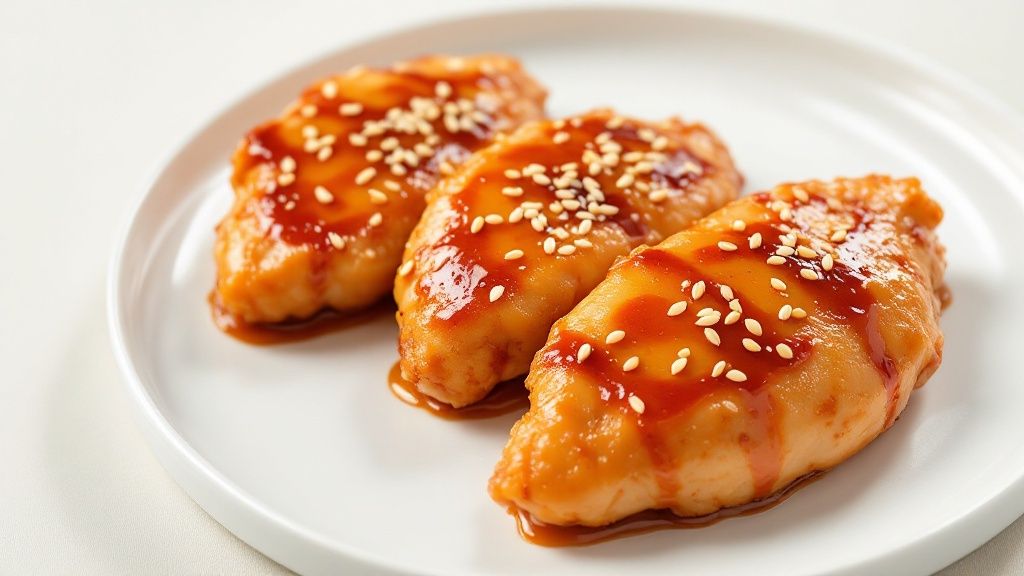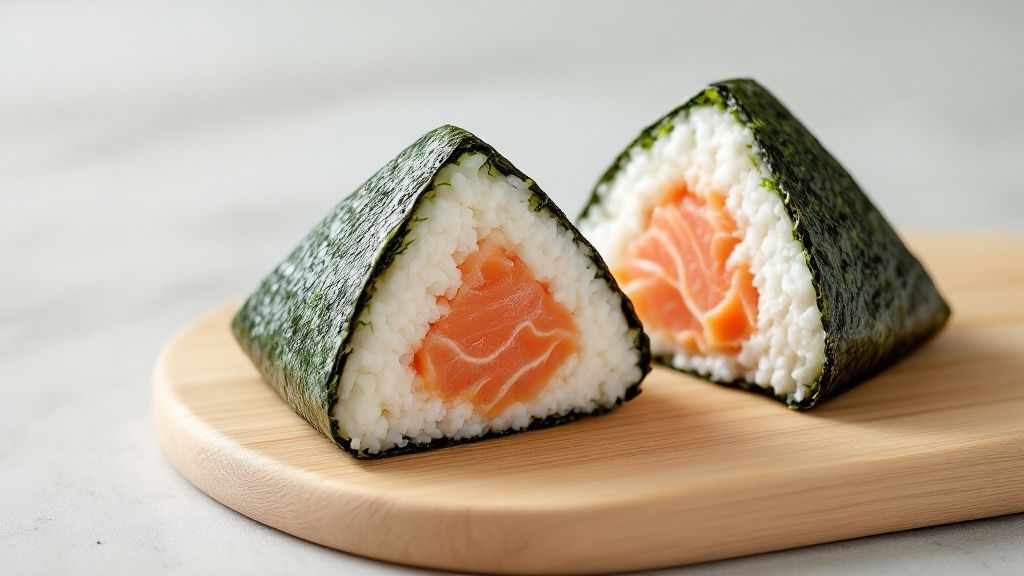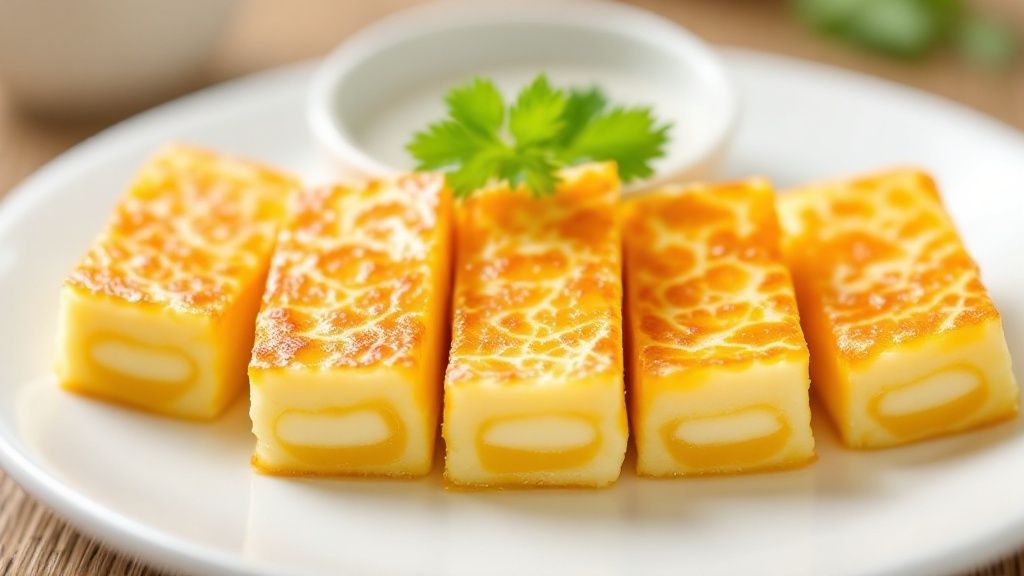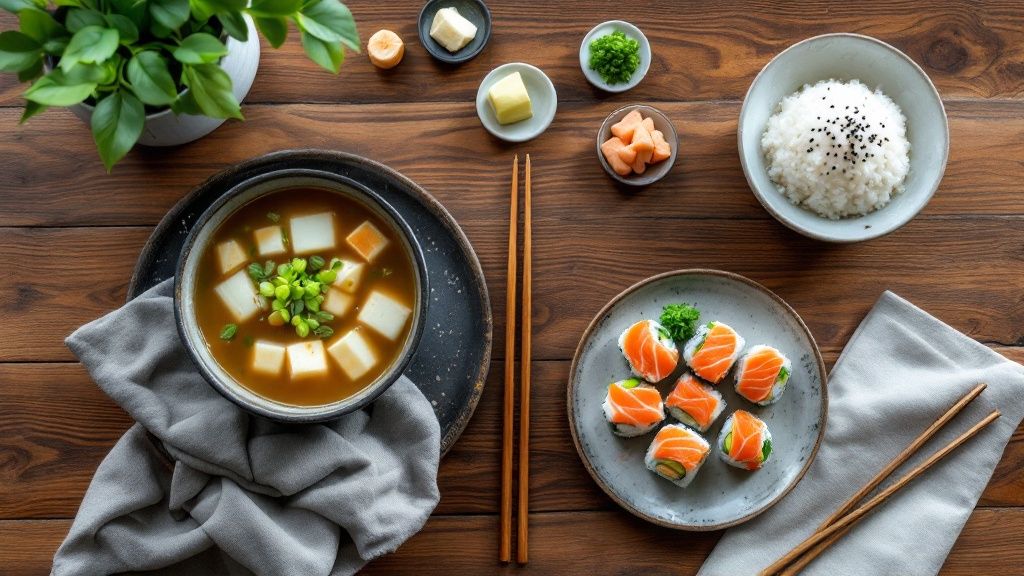Dive into Delicious: Your Japanese Cooking Journey Starts Now
Craving authentic Japanese food? This listicle presents eight easy Japanese recipes perfect for home cooks of all levels. Learn to make classics like Chicken Teriyaki, Onigiri, Miso Soup, Okonomiyaki, Oyakodon, Udon Noodle Soup, Japanese Curry, and Tamagoyaki. These simple dishes require minimal effort and readily available ingredients, letting you enjoy the delicious and healthy flavors of Japan without restaurant prices or complex techniques. Start exploring these easy Japanese recipes and elevate your home cooking today!
1. Chicken Teriyaki
Chicken Teriyaki earns its top spot on our list of easy Japanese recipes for its delicious blend of sweet and savory flavors, quick cooking time, and readily available ingredients. This popular dish features pan-fried chicken coated in a glossy teriyaki sauce, a simple yet flavorful combination of soy sauce, mirin, sake, and sugar. This perfect balance has catapulted Chicken Teriyaki to global recognition, making it a staple in Japanese cuisine and beyond.

The magic of Chicken Teriyaki lies in the caramelized glaze that forms as the sauce reduces and coats the chicken. This creates a beautiful sheen and intensifies the sweet and savory notes. The pan-frying technique ensures a quick cooking time, usually under 30 minutes, making it an ideal weeknight meal. Whether you’re a busy professional, a student, or simply looking for a flavorful and easy Japanese recipe, Chicken Teriyaki is a fantastic choice. Learn more about Chicken Teriyaki and explore the rich culinary landscape it inhabits.
Why Choose Chicken Teriyaki?
This dish offers a variety of benefits that make it a winner for easy Japanese cooking:
- Simple Ingredients: Most supermarkets carry the necessary ingredients for the teriyaki sauce.
- Versatility: While chicken is traditional, the teriyaki sauce works beautifully with other proteins like beef, pork, tofu, or even vegetables.
- Meal Prep Friendly: Chicken Teriyaki can be prepared in advance, making it perfect for busy schedules and bento boxes.
- High in Protein: Provides a satisfying and nutritious meal.
Pros and Cons:
While Chicken Teriyaki is generally easy and delicious, it's good to be aware of a few potential drawbacks:
- Sugar Content: Traditional recipes can be high in sugar. Adjust the amount to suit your dietary preferences.
- Bottled Sauces: While convenient, bottled teriyaki sauces often lack the authentic, nuanced flavor of homemade.
- Messy Cooking: The pan-frying process can lead to splattering, so be prepared for some cleanup.
Tips for Teriyaki Success:
- Use Chicken Thighs: They offer more flavor and tenderness than chicken breasts.
- Sauce Consistency: Reduce the sauce until it coats the back of a spoon for that perfect glossy texture.
- Marinate and Score: Score the chicken before marinating to allow the flavors to penetrate deeper.
- Thicken the Sauce: Add a cornstarch slurry for a thicker, more substantial sauce.
Chicken Teriyaki’s rise to fame can be attributed to various factors, including renowned chefs like Masaharu Morimoto showcasing elevated versions in their restaurants, the popularization of the dish by chains like Yoshinoya, and the widespread availability of bottled teriyaki sauces like Kikkoman in the US. This versatile dish is frequently enjoyed as a donburi (rice bowl dish), a component of bento boxes, and a protein option in Japanese fast-casual restaurants. Its simple elegance makes it a perfect entry point for anyone looking to explore the world of easy Japanese recipes.
2. Onigiri (Japanese Rice Balls)
Onigiri, or Japanese rice balls, are a delicious and incredibly versatile example of easy Japanese recipes. These savory snacks are made by shaping cooked Japanese short-grain rice into triangles or rounds and often filling them with tasty ingredients. Wrapped partially or fully in nori seaweed, they're a staple in Japanese cuisine, serving as a convenient and portable meal or snack for centuries. Whether packed in lunch boxes (bento), enjoyed on picnics, or eaten on-the-go, onigiri are a true embodiment of Japanese culinary practicality and flavor.

Making onigiri is surprisingly simple, making it a perfect addition to any list of easy Japanese recipes. The process involves cooking Japanese short-grain rice (slightly firmer than usual for better structure), letting it cool slightly, then shaping it by hand. Wetting your hands with salted water prevents the rice from sticking. A piece of plastic wrap can also be helpful, especially when first learning to shape them. Fillings are then placed in the center, and the rice is molded around them. Finally, the onigiri can be wrapped partially or fully in a sheet of nori seaweed. For the best texture and flavor, wrap the nori just before eating to prevent it from becoming soggy.
Onigiri deserve a spot on this list because they are incredibly easy to make with minimal ingredients, making them both economical and perfect for meal prep. Their versatility is another major draw, as the fillings can be customized to suit any preference. From classic combinations like salmon flakes and pickled plum (umeboshi) to more modern variations featuring tuna mayonnaise or even kimchi, the possibilities are endless. This allows you to utilize leftovers creatively and cater to a variety of tastes.
Pros:
- Easy to make with minimal ingredients
- Great for meal prep
- Customizable fillings based on preference
- Economical way to use leftover ingredients
- No special equipment required
- Portable and perfect for lunch boxes, picnics, or on-the-go snacking
Cons:
- Rice can dry out if not eaten within a few hours
- Requires proper rice cooking technique
- Shaping takes practice
- Best with Japanese short-grain rice specifically
Tips for Perfect Onigiri:
- Wet hands with salt water to prevent rice from sticking while shaping.
- Use plastic wrap to help form perfect shapes when learning.
- Cook rice slightly firmer than usual for better structure.
- Let shaped onigiri rest briefly before wrapping in nori.
- For the best texture, wrap nori just before eating.
Examples of Onigiri in Japanese Culture:
You'll find onigiri everywhere in Japan, from the numerous varieties sold at convenience stores (konbini) like 7-Eleven and Lawson to the carefully crafted bento boxes designed by chefs like Maki Ogawa. They're also a common sight in anime and manga, often depicted as a typical lunch item, reflecting their widespread popularity and integral role in Japanese cuisine. Indeed, many Japanese mothers rely on onigiri as a quick, easy, and nutritious option for school lunches. So, next time you’re looking for an easy Japanese recipe that’s both delicious and culturally significant, give onigiri a try!
3. Miso Soup: An Easy Japanese Recipe Staple
Miso soup is a quintessential Japanese comfort food and an exceptionally easy Japanese recipe to master. This umami-rich soup, a cornerstone of Japanese cuisine, features a flavorful dashi broth combined with miso paste and a variety of ingredients like tofu, seaweed, and green onions. Its simplicity and adaptability make it a perfect addition to any meal, and it's a fantastic entry point for anyone exploring Japanese cooking. Learn more about Miso Soup and its rich culinary history! Learn more about Miso Soup
This simple yet flavorful soup boasts an umami-rich flavor profile derived from the combination of dashi stock and fermented miso paste. The preparation time is remarkably quick, often taking just 5-10 minutes, making it an ideal weeknight meal or a quick and healthy lunch option. One of the greatest appeals of miso soup is its customizability. You can tailor the ingredients to your liking and the season, adding vegetables, mushrooms, or even noodles.
Why Miso Soup Deserves a Spot on this List of Easy Japanese Recipes:
Miso soup earns its place among easy Japanese recipes due to its straightforward preparation, quick cooking time, readily available ingredients (especially outside of Japan with adjustments), and high nutritional value. It provides a satisfying and healthy meal option, especially for those looking for low-calorie, probiotic-rich options. This resonates particularly well with health-conscious consumers, a key segment of the target audience.
Features and Benefits:
- Umami-rich: The combination of dashi and miso creates a deeply savory flavor that is both comforting and satisfying.
- Probiotic-rich: Miso paste, a fermented ingredient, introduces beneficial probiotics to support gut health. This is especially appealing to health and wellness enthusiasts.
- Highly adaptable: From silken tofu for a traditional texture to seasonal vegetables like spinach or mushrooms, the ingredient possibilities are endless.
- Quick and easy: With a preparation time of just a few minutes, it’s a perfect meal for busy lifestyles.
- Low-calorie and nutritious: Miso soup is light yet filling and packed with essential nutrients from the seaweed and other additions.
Pros and Cons:
- Pros: Rich in probiotics, simple to prepare, adaptable to seasonal ingredients, comforting and warming, contains beneficial nutrients.
- Cons: Authentic dashi ingredients can be challenging to source, high sodium content (which can be a concern for some), miso paste varieties can be overwhelming for beginners, doesn't store well for extended periods.
Examples and Tips for Successful Implementation:
- Traditional Japanese Breakfast: Miso soup is a standard component of a traditional Japanese breakfast, alongside rice, grilled fish, and pickled vegetables.
- Accompaniment to Set Meals: It’s commonly served with most Japanese set meals (teishoku), complementing the main dish and rice.
- Restaurant Staple: Virtually every Japanese restaurant worldwide offers miso soup, often showcasing chef-inspired variations.
Tips for Making Delicious Miso Soup:
- Preserve the Probiotics: Never boil the soup after adding the miso paste, as this can kill the beneficial bacteria.
- Smooth Incorporation: Dissolve the miso paste in a small amount of broth before adding it to the main pot to ensure even distribution and prevent clumping.
- Start Mild: If you're new to miso, begin with white (shiro) miso for a milder flavor. Gradually explore darker varieties like red (aka) miso as your palate adjusts.
- Keep Staples on Hand: Having dried seaweed (wakame or kombu) and miso paste in your pantry allows for quick and easy miso soup preparation anytime.
- Silken Tofu: Opt for silken tofu for the most authentic texture.
Miso soup is more than just a simple soup; it's an embodiment of Japanese culinary tradition. Its ease of preparation, coupled with its health benefits and delicious flavor, makes it a must-try for anyone seeking easy Japanese recipes. This soup, enjoyed by everyone from busy professionals to social media savvy consumers interested in Japanese culture, is a testament to the power of simple, flavorful ingredients.
4. Okonomiyaki (Japanese Savory Pancake)
Okonomiyaki, often referred to as a "Japanese savory pancake" or "Japanese pizza," is a delicious and highly customizable dish that earns its spot on this list of easy Japanese recipes. It's a versatile and fun meal, perfect for a casual weeknight dinner or a weekend gathering. The name itself, okonomiyaki, translates to "grilled (yaki) as you like it (okonomi)," highlighting the freedom you have to incorporate your favorite ingredients. At its core, okonomiyaki consists of a batter made with flour, yam (nagaimo), and dashi, mixed with shredded cabbage and a variety of other additions, then cooked on a griddle.

Okonomiyaki's popularity stems from its adaptable nature and the interactive cooking experience it offers. While specialized okonomiyaki restaurants exist (especially in Osaka and Hiroshima), it's also a common street food and home-cooked meal. The preparation is relatively straightforward, even for beginners, and the customizable nature makes it a crowd-pleaser. You can easily adapt the recipe to use leftover vegetables, different proteins, or even incorporate modern twists like cheese or kimchi.
The two most famous styles are Osaka-style and Hiroshima-style. Osaka-style involves mixing all ingredients into the batter before cooking, resulting in a thick, pancake-like consistency. Hiroshima-style, on the other hand, features layers of ingredients, often including noodles, cooked separately and then combined. Both styles are finished with a savory okonomiyaki sauce, mayonnaise, a sprinkle of dried seaweed (aonori), and dancing bonito flakes (katsuobushi).
Pros:
- Great way to use leftover vegetables: Clear out your fridge and create a delicious meal with whatever vegetables you have on hand.
- Filling one-dish meal: Okonomiyaki provides a balanced meal with carbohydrates, protein, and vegetables in one serving.
- Fun interactive cooking experience: Cooking okonomiyaki can be a social activity, especially when made on a tabletop griddle.
- Adaptable to dietary preferences: Vegetarian, pescatarian, or meat-lover? Okonomiyaki can cater to everyone.
- Excellent comfort food: The savory flavors and satisfying texture make it a perfect comfort food choice.
Cons:
- Traditional version requires specific Japanese ingredients: Ingredients like nagaimo (yam) and dashi might require a trip to an Asian grocery store.
- Can be messy to flip if made too large: Practice makes perfect! Start with smaller pancakes to master the flipping technique.
- Toppings like bonito flakes may be unfamiliar to some: While delicious, the look and texture of moving bonito flakes can surprise some first-timers.
- Takes practice to achieve the right texture: Achieving a crispy exterior and soft interior requires attention to heat control and cooking time.
Tips for Easy Japanese Recipe Success:
- Shred cabbage very finely: This helps it cook evenly and contributes to the right texture.
- Don't overmix the batter: Overmixing can lead to a dense pancake. Mix until just combined.
- Keep heat at medium-low for thorough cooking: This ensures the inside cooks properly without burning the outside.
- Use a fish slice or two spatulas for easier flipping: This will help prevent the pancake from breaking.
- If authentic nagaimo is unavailable, a small amount of grated potato works as a substitute: While not identical, it provides a similar texture and binding effect.
Whether you're a Japanese food enthusiast, a lover of easy recipes, or simply looking for a new culinary adventure, okonomiyaki is a must-try. It's a fun, flavorful, and flexible dish that embodies the essence of Japanese home cooking. So gather your ingredients, heat up your griddle, and create your own personalized okonomiyaki masterpiece!
5. Oyakodon (Chicken and Egg Rice Bowl)
Oyakodon, meaning "parent-and-child rice bowl," is a quintessential Japanese comfort food and an exceptionally easy Japanese recipe perfect for a quick weeknight dinner. This simple yet deeply satisfying dish features tender chicken and softly cooked eggs simmered in a sweet and savory dashi-based sauce, all served over a bed of fluffy rice. Its ease of preparation, minimal ingredients, and balanced nutritional profile make it a beloved staple in Japanese homes and restaurants alike.
This one-bowl wonder gets its name from the combination of chicken (the parent) and egg (the child). The dish is traditionally prepared in a special oyakodon pan or a small skillet, allowing for quick and even cooking. The gently cooked eggs create a wonderfully custardy texture that complements the savory chicken and sweet-savory sauce beautifully. You can have this delicious and fulfilling meal on the table in under 20 minutes, making it an ideal choice for busy individuals seeking authentic Japanese flavors without the fuss.
How It Works:
Oyakodon starts with thinly sliced chicken, which is quickly cooked in the dashi-based sauce. The sauce is a delicate balance of dashi (Japanese stock), soy sauce, mirin (sweet rice wine), and sugar. Once the chicken is almost cooked through, the eggs are added in two stages. The first pour allows for a partially cooked layer, while the second creates a softer, almost runny topping. A drop lid (otoshibuta) or a piece of parchment paper placed directly on the surface helps to create even simmering and a perfect egg consistency. The final dish is then served immediately over steamed rice, allowing the flavors to meld together beautifully.
Examples of Oyakodon:
- Family Restaurants: Oyakodon is a common menu item in Japanese family restaurants, offering a quick, affordable, and tasty meal.
- Teishoku (Set Meal) Restaurants: It's often featured as a lunch special in teishoku restaurants, served alongside miso soup, pickles, and other small dishes.
- Home Cooking: Oyakodon is a staple in homes across Japan, enjoyed by people of all ages. Its simplicity and adaptability make it a go-to recipe for weeknight dinners.
Tips for Perfect Oyakodon:
- Don't overcook the eggs: The key to a perfect Oyakodon is slightly runny eggs. Add them in two stages and remove the pan from the heat just as they begin to set.
- Slice chicken thinly: Thinly slicing the chicken ensures quick and even cooking, preventing it from becoming tough.
- Use a drop lid (otoshibuta): A drop lid helps to distribute heat evenly and create a consistent simmer, resulting in perfectly cooked eggs. If you don't have an otoshibuta, a piece of parchment paper cut into a circle works just as well.
- Serve immediately: Oyakodon is best enjoyed piping hot, right after cooking, when the flavors are at their peak.
Pros and Cons:
Pros:
- Minimal ingredients required
- Quick weeknight dinner option
- Balanced meal with protein and carbohydrates
- Comforting and filling
- Economical dish using basic ingredients
Cons:
- Best eaten immediately after cooking
- Traditional dashi ingredients may not be readily available
- Requires proper timing to achieve the ideal egg consistency
- Not suitable for those with egg allergies
Why Oyakodon Deserves its Place in the List of Easy Japanese Recipes:
Oyakodon embodies the essence of easy Japanese cooking. It utilizes readily available ingredients, requires minimal preparation time, and results in a complete and satisfying meal. Its simple yet complex flavor profile, the comforting texture of the softly cooked eggs, and the convenience of being a one-bowl dish make it a perfect introduction to Japanese cuisine and a welcome addition to any weeknight dinner rotation. For those seeking a quick, easy, and authentically Japanese meal, Oyakodon is a must-try. It's no wonder this dish has remained a beloved classic for centuries.
6. Udon Noodle Soup
Udon noodle soup earns its spot on this list of easy Japanese recipes because it offers a delicious and satisfying meal with minimal effort, especially if you opt for pre-made ingredients. This comforting dish features thick, chewy wheat noodles served in a light, flavorful broth, making it a perfect example of simple Japanese cuisine done right. Whether you're a busy weeknight cook or looking for a light yet filling meal, udon noodle soup is a versatile and adaptable option. Learn more about Udon Noodle Soup
The beauty of udon lies in its simplicity and customizability. The basic components are the udon noodles and the dashi-based broth. Dashi, a traditional Japanese stock, provides a savory foundation, while the thick udon noodles offer a satisfying chew. From there, a world of toppings opens up, allowing you to tailor the soup to your preferences and what's in season.
Several classic variations highlight the versatility of udon noodle soup:
- Kake udon: The simplest form, featuring plain noodles in broth, showcasing the pure flavors of the ingredients.
- Tempura udon: Crispy tempura adds a delightful textural contrast to the soft noodles and broth.
- Niku udon: Beef adds a rich and savory element, perfect for a heartier meal.
- Kitsune udon: Sweet fried tofu (aburaage) provides a touch of sweetness and a unique flavor profile.
Why This Easy Japanese Recipe Works:
Udon noodle soup is a quick and easy meal, particularly when using store-bought noodles and broth. It’s highly customizable. Leftover chicken or vegetables can be easily incorporated, and seasonal ingredients can further elevate the dish. The light yet satisfying nature of udon makes it an appealing choice for any time of year, although it's especially comforting in colder weather. For Japanese skincare and haircare enthusiasts, a warm bowl of udon can be a soothing and restorative part of a healthy lifestyle.
Pros and Cons:
- Pros: Quick to prepare, easily customizable with seasonal ingredients, comforting and satisfying, works well with leftover proteins.
- Cons: Homemade noodles are labor-intensive, quality of dried udon can vary, traditional broth requires specific Japanese ingredients, noodles can become gummy if overcooked.
Tips for the Best Udon Noodle Soup:
- Cook noodles al dente: Cook the noodles just until tender but still firm to the bite, then rinse them thoroughly under cold water to prevent sticking and achieve the perfect texture.
- Upgrade your broth: Even with instant dashi, adding a small piece of dried kombu seaweed can deepen the flavor significantly.
- Keep toppings simple: While experimenting is fun, sometimes less is more. Simple toppings allow the delicate flavors of the broth and noodles to shine.
- Serve immediately: Udon noodle soup is best enjoyed fresh. The noodles will continue to absorb broth if left sitting, potentially affecting the texture.
Udon noodle soup offers a taste of authentic Japanese cuisine without demanding hours in the kitchen. It's an easy Japanese recipe that appeals to both novice cooks and seasoned chefs. Whether you are a tech-savvy mobile shopper looking for a quick meal or a Japanese product lover seeking an authentic culinary experience, udon noodle soup deserves a place in your recipe repertoire.
7. Japanese Curry (Kare Raisu)
Looking for easy Japanese recipes that deliver big on flavor? Look no further than Japanese Curry (Kare Raisu). This thick, mild, and slightly sweet curry is a staple in Japanese households and an incredibly easy dish to make, securing its spot on our list of must-try recipes. Unlike its spicier Indian and Thai counterparts, Kare Raisu features tender chunks of meat and vegetables like potatoes, carrots, and onions, simmered in a rich, gravy-like sauce served over fluffy white rice. Its unique flavor profile, born from adapting Indian curry to Japanese tastes during the Meiji era, has made it one of Japan's most beloved comfort foods. Learn more about Japanese Curry (Kare Raisu)
The magic of Kare Raisu often lies in pre-made curry roux blocks, readily available in most Asian grocery stores. These blocks, typically made with a blend of spices, flour, and fats, melt into the simmering curry, thickening the sauce and imparting its characteristic flavor. This significantly simplifies the cooking process, making it a perfect weeknight meal for busy individuals and families alike.
Why choose Kare Raisu as your next easy Japanese recipe?
- Extremely Family-Friendly Flavor: The mildness of Japanese curry makes it a hit with both adults and children. It's a great way to introduce younger palates to the world of curry.
- Simple One-Pot Preparation: Minimal cleanup is required, as everything cooks together in one pot.
- Versatile with Different Proteins: While chicken thighs provide juicy results, you can easily substitute beef, pork, or even tofu for a vegetarian option. Seafood curry is also a popular variation.
- Perfect for Meal Prep: Kare Raisu makes excellent leftovers and freezes well, making it ideal for busy weeknights. Cook a large batch and enjoy it throughout the week!
- Comforting in Cold Weather: The warm, hearty nature of this dish makes it particularly satisfying during colder months.
Examples of Kare Raisu variations:
- Katsu Curry: Topped with a crispy, breaded pork cutlet (tonkatsu).
- Vegetable Curry: Packed with a variety of colorful vegetables.
- Seafood Curry: Featuring shrimp, scallops, or other seafood.
- Curry Udon: Enjoy the curry sauce over thick udon noodles instead of rice.
Tips for elevating your Kare Raisu:
- Caramelize Onions Thoroughly: This adds depth and sweetness to the curry base.
- Grated Apple for Natural Sweetness: A touch of grated apple enhances the sweetness without relying on refined sugars.
- Overnight Flavor Development: Allowing the curry to sit overnight in the refrigerator allows the flavors to meld and deepen.
- Dark Chocolate for Richness: A small square of dark chocolate adds a surprising layer of complexity and richness.
Pros and Cons of Kare Raisu:
Pros: Extremely family-friendly flavor, can be made in large batches, freezes well for meal prep, versatile with different proteins, simple one-pot preparation, comforting in cold weather.
Cons: Commercial curry roux can contain preservatives and MSG, the traditional version takes time to develop flavor, less complex than other Asian curries, can be high in calories.
Whether you're a seasoned cook or just starting your journey with easy Japanese recipes, Kare Raisu is a delightful and satisfying dish that is sure to become a new favorite. Its ease of preparation, customizable nature, and comforting flavors make it a perfect addition to any meal rotation. Brands like House Foods and S&B Foods offer convenient curry roux blocks, while restaurant chains like CoCo Ichibanya showcase the dish's versatility. Even renowned chefs like Tadashi Ono have championed Kare Raisu in their cookbooks, solidifying its place as a beloved classic.
8. Tamagoyaki (Japanese Rolled Omelette)
Tamagoyaki, meaning "grilled egg," is a quintessential Japanese dish that's surprisingly easy to make once you get the hang of it. This sweet-savory rolled omelette, made by layering thin sheets of cooked egg, is a staple in Japanese cuisine, appearing in everything from breakfast sets to bento boxes and even as sushi toppings. It's a versatile and protein-packed dish that deserves a spot in your easy Japanese recipes repertoire.

The process involves whisking eggs with seasonings like soy sauce, sugar, and mirin, then cooking thin layers in a special rectangular pan called a tamagoyaki pan. Each layer is rolled up before the next one is cooked, creating the signature multi-layered effect. While the traditional technique takes practice, the beautiful presentation and delicate flavors make it a worthwhile endeavor. Even if you don't achieve perfection on your first try, it's still a delicious and satisfying easy Japanese recipe to explore.
Why Tamagoyaki deserves its place in your easy Japanese recipes list:
- Sweet-savory flavor profile: The balance of sweet and savory makes it appealing to a wide range of palates.
- Versatile: Enjoy it hot or cold, for breakfast, lunch, or dinner, in a bento box or as part of a larger meal.
- High in protein: Eggs are a great source of protein, making tamagoyaki a nutritious addition to any meal.
- Adaptable: Experiment with different fillings like nori, cheese, or vegetables.
Pros:
- Uses basic ingredients (eggs, sugar, soy sauce, mirin)
- Can be prepared in advance
- Works as a side dish, breakfast item, or bento component
- High protein content
- Adaptable with different fillings
Cons:
- Traditional technique requires practice
- Special rectangular pan is ideal but not essential (a round pan works too!)
- Can be time-consuming to make multiple layers
- Easy to overcook if not careful
- Requires attention to temperature control
Examples of Tamagoyaki:
- Basic tamagoyaki in a traditional Japanese breakfast set
- Dashimaki tamago (with dashi stock added for a richer flavor)
- Nori-wrapped tamagoyaki in bento boxes
- Tamago nigiri (tamagoyaki served as sushi)
Tips for making Tamagoyaki:
- Use cooking chopsticks to roll the layers smoothly for a professional look.
- Keep the heat medium-low to avoid browning and ensure even cooking.
- Lightly oil the pan between each layer to prevent sticking.
- A small amount of water or dashi added to the egg mixture makes the texture fluffier.
- If you don't have a tamagoyaki pan, use a round pan and trim the edges of the omelette to create a rectangular shape.
Tamagoyaki has been popularized by figures such as sushi master Jiro Ono (featured in "Jiro Dreams of Sushi"), bento creators, and Japanese cooking experts like Makiko Itoh and Harumi Kurihara. This dish represents a beautiful intersection of simple ingredients, careful technique, and delightful flavor, making it a must-try for anyone interested in easy Japanese recipes. Learn more about Tamagoyaki (Japanese Rolled Omelette) Enjoy exploring this simple yet elegant dish!
Easy Japanese Recipes Comparison
| Recipe | Implementation Complexity 🔄 | Resource Requirements 💡 | Expected Outcomes ⭐📊 | Ideal Use Cases 💡 | Key Advantages ⚡ |
|---|---|---|---|---|---|
| Chicken Teriyaki | Moderate: pan-frying and sauce reduction steps | Common ingredients (soy sauce, mirin, sake, sugar) | Tender, flavorful chicken with caramelized glaze ⭐⭐ | Quick meals, versatile protein dish | Simple ingredients, quick cook, high protein |
| Onigiri (Rice Balls) | Low to moderate: shaping takes practice | Minimal: cooked rice, fillings, nori | Portable, customizable snack or light meal ⭐ | Bento boxes, picnics, on-the-go eating | Easy prep, economical, no special tools needed |
| Miso Soup | Low: simple simmering and mixing technique | Requires miso paste and dashi stock (may be less common) | Umami-rich, probiotic soup with health benefits ⭐⭐ | Breakfast, accompaniment to meals | Quick, probiotic rich, adaptable ingredients |
| Okonomiyaki | High: griddle cooking, batter mixing, flipping | Variety of fresh vegetables, special sauces | Hearty, savory pancake with rich toppings ⭐⭐ | Interactive cooking, comfort food | Uses leftovers, filling, customizable |
| Oyakodon | Low to moderate: timing egg cooking is key | Basic ingredients (dashi, chicken, eggs, soy sauce) | Balanced, custardy rice bowl meal ⭐ | Quick weeknight meals, comforting dinner | Minimal ingredients, fast, economical |
| Udon Noodle Soup | Moderate: broth preparation and noodle cooking | Udon noodles, dashi broth base, toppings | Light, satisfying soup with chewy noodles ⭐⭐ | Everyday meal, hot or cold serving | Quick with store-bought noodles, customizable |
| Japanese Curry | Moderate: one-pot simmering, roux preparation | Curry roux or spices, meat, veggies | Thick, mild curry stew with rich flavor ⭐⭐ | Family meals, batch cooking, freezer friendly | Versatile proteins, freezer-friendly, comforting |
| Tamagoyaki | High: requires skillful rolling technique | Basic eggs, soy sauce, special rectangular pan ideal | Sweet-savory, layered rolled omelette ⭐ | Breakfast, bento side, sushi topping | High protein, make ahead, showcases technique |
Ready to taste the magic of Japanese home cooking?
From the savory simplicity of Miso Soup and Onigiri to the satisfying depth of Japanese Curry and Oyakodon, these eight easy Japanese recipes provide a delicious glimpse into the world of Japanese cuisine. Mastering these dishes not only allows you to enjoy authentic Japanese flavors at home, but also opens up a world of culinary exploration. These recipes are also great for sharing – imagine impressing your friends and family with homemade Chicken Teriyaki or perfectly rolled Tamagoyaki. When preparing these easy Japanese recipes, remember that presentation matters too! Proper food storage can keep your leftovers fresh and delicious. Learn about the important factors to consider when choosing the right takeout containers to maintain the quality of your culinary creations.
By starting with these simple yet flavorful dishes, you'll develop a deeper appreciation for the balance and artistry present in Japanese cooking. The more you experiment with these easy Japanese recipes, the more confident you'll become in exploring even more complex and exciting dishes.
Want to elevate your Japanese cooking experience even further? Explore Buy Me Japan for authentic Japanese ingredients, seasonings, and kitchen tools that will add a touch of magic to your meals. Discover specialty items and elevate your dishes from delicious to truly exceptional. Happy cooking!




Share:
Top 8 Japanese Health Supplements for a Healthier You
Sencha Brewing Instructions: Perfect Green Tea Every Time